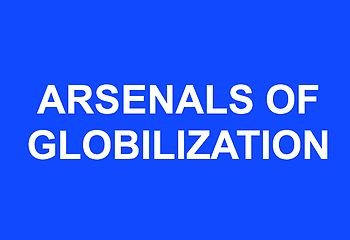Arsenals of Globalization
Venice and Amsterdam: the identity of shipping ‘arsenals’ and maritime material culture
The Arsenale of Venice is nowadays an urban landmark and the core location of the Biennale. Historically, it was the centre of the naval power of the Republic of Venice, where the naval and merchant fleet of the city state was mass produced. Its origin dates back to the 12th century and it continued to function as ‘one of the earliest large-scale industrial and military enterprises in history’ into the 19th century. The formula of self contained large scale production complexes can be recognized in another maritime city, Amsterdam. Although incomparable in size and age, the 17th-and 18th-century shipyards of the trading organization of the Dutch East India Company and the city’s Admiralty (navy) can be considered as identical to the Arsenale in the way they represent predecessors of industrial production and urban centres of globalisation linked to shipping networks. The exploratory project of archaeologists Jerzy Gawronski and Francesco Tiboni aims to show on the basis of archaeological analysis that Venice and Amsterdam share an identical spatial and material organization defined by the rules of maritime culture. Their similarities will be shown with a catalogue of archaeological finds of shipbuilding tools from both cities. The catalogue will be designed according to the model which Willem van Zoetendaal developed for the c. 12.000 urban material culture items recovered during the Amsterdam North/Southline metroproject (catalogue Stuff).
